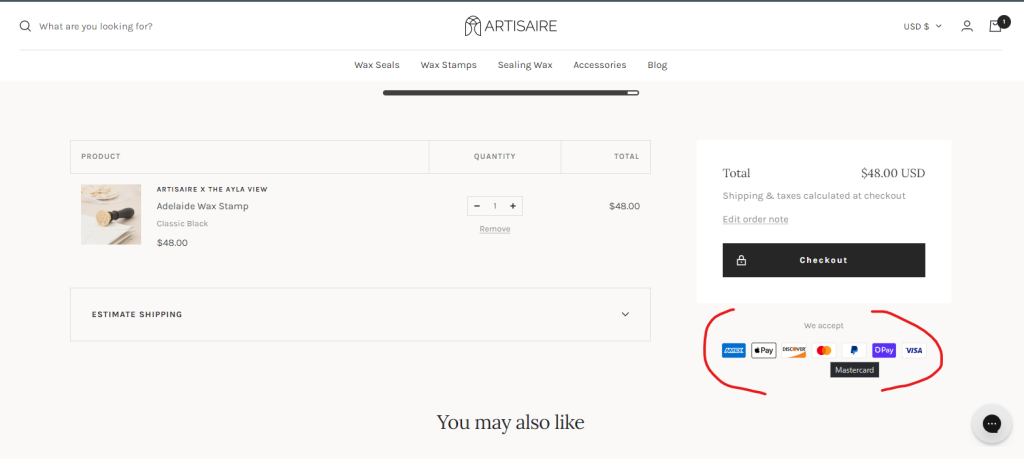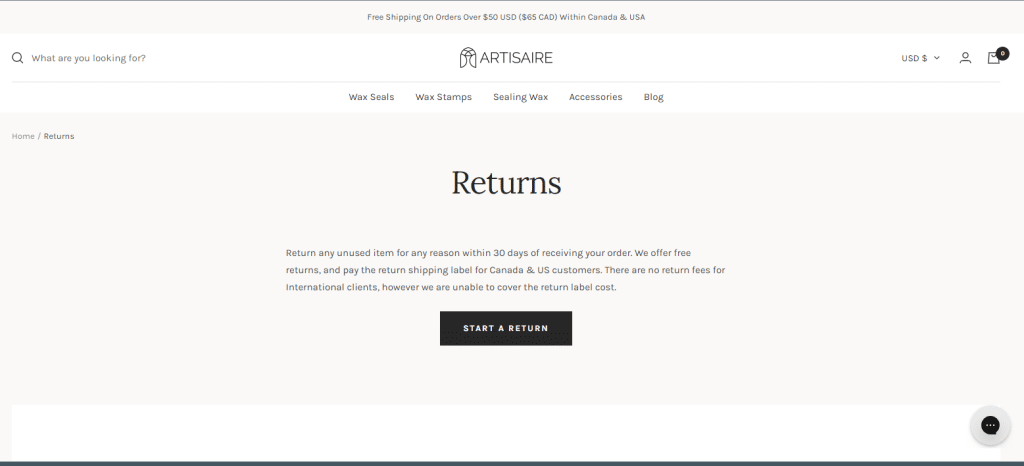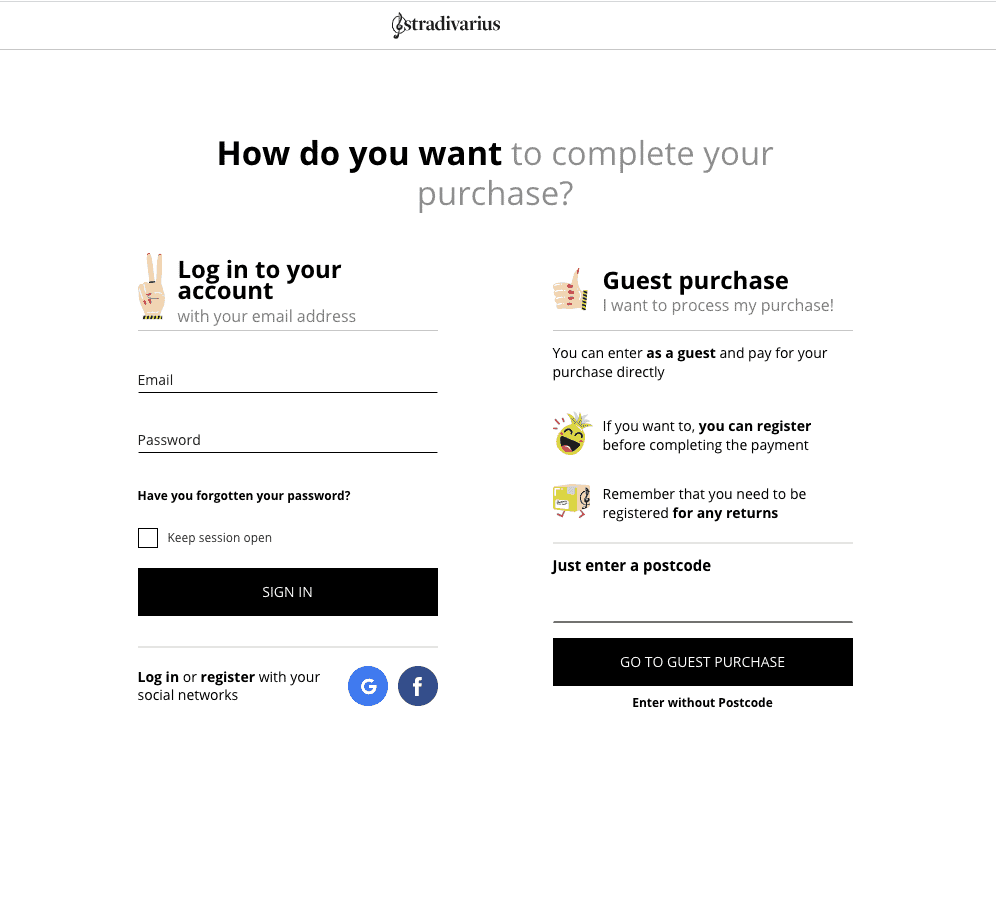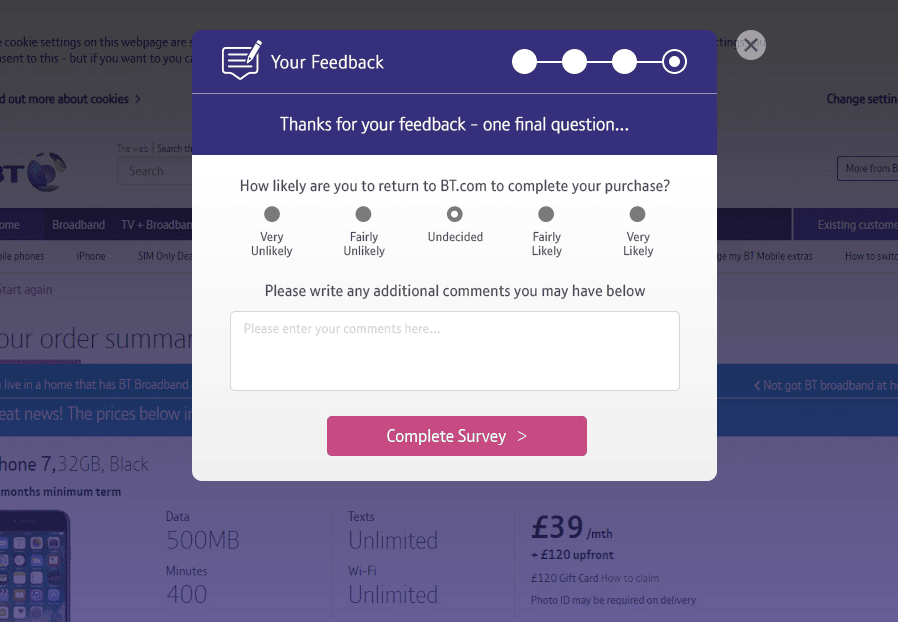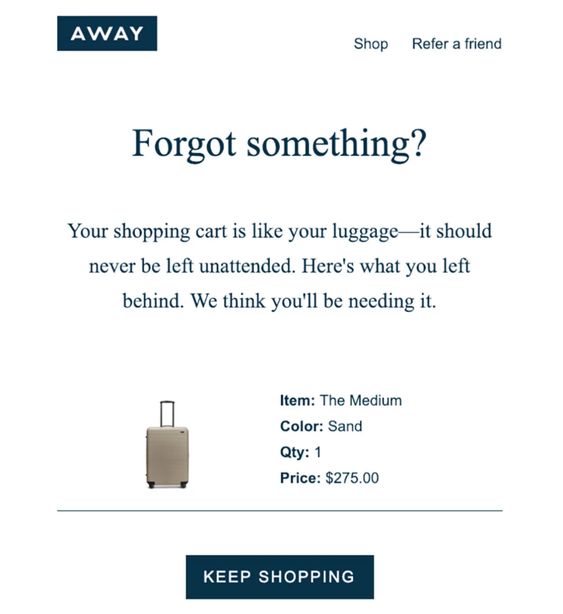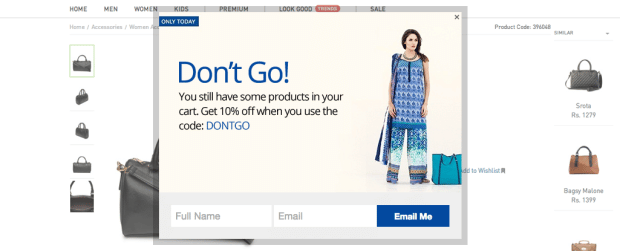Let’s face it; we’ve all been there. We’ve perused virtual shelves, hand-picked our favorites, and added them to our digital shopping carts with the intention of making a purchase.
But for one reason or another, that purchase never comes to fruition, and our shopping carts are left abandoned. This familiar phenomenon has a term in the e-commerce realm – the Cart Abandonment Rate.
According to a recent study, the average cart abandonment rate stands at a staggering 69.99%. That’s nearly 7 out of 10 potential online sales lost to the whims of fate or the allure of another shopping excursion.
Imagine walking into a physical store, filling a shopping cart to the brim, and then rushing out without making a purchase. This example highlights the impact that abandoned carts have on e-commerce and its bottom line.
So, how can e-commerce brands reduce their shopping cart abandonment rate? This is exactly what we will be looking at in this article. Let’s get on with it…
What is Cart Abandonment Rate
You already know what shopping cart abandonment rate means, but let’s go ahead and define it formally so that you fully understand what you’re doing the next time you abandon your cart.
Cart abandonment refers to the phenomenon that occurs when online shoppers add products to their cart and begins a checkout process for their order but fail to follow through to complete the purchase.
Shopping cart abandonment is a common problem faced by ecommerce website owners and retailers, and it can result in a significant loss of online sales.
Cart abandonment rate typically represents the number of lost potential sales and gives business owners insights into customer behavior and other factors affecting conversion rates.
Effects of cart abandonment
Next time, before you abandon a shopping cart online, consider this scenario: you and five other shoppers walk into a physical store, each filling your shopping carts with groceries. However, an unexpected event occurs, and you all leave without making a purchase.
The aftermath of this situation can be pretty frustrating, not just because carts are left scattered but also because store attendants or owners are left with the task of returning every item to its rightful place.
Let’s take a look at some of the effects of shopping carts abandonment.
-
Loss of Potential Revenue
This is an apparent reason since no purchases are completed. Abandoned carts represent lost sales opportunities, and if the trend continues, it can significantly impact a business’s overall revenue, especially when customers abandon large or expensive items in their carts.
Shopping Cart abandonment can also result in missed upsell opportunities. Customers who abandon their carts may not see recommended or related items that could have increased the size of their order and generated more revenue for the business.
-
Difficulty in Inventory Management
Remember the supermarket scenario I gave earlier?
When a customer abandons their cart, it can result in overstocked or understocked inventory levels, making it challenging for businesses to manage their supply chain effectively.
This can significantly affect the website’s performance and cause the site to slow down. The effect can even be more pronounced during peak sales, which may cause you to lose customers.
-
Lower Conversion Rate
Cart abandonment also affects the overall conversion rate of an ecommerce website. The conversion rate is the percentage of visitors who complete a purchase after visiting a website, and high cart abandonment rates can lead to lower conversion rates and decreased revenue for the business.
-
Increased Customer Acquisition Cost
When shopping cart abandonment rates are high, businesses may need to invest more in advertising and marketing to attract new customers and make up for lost sales.
This can lead to a higher cost per acquisition, as more resources are needed to bring in each new customer. Additionally, businesses may also need to offer promotions and discounts to entice potential customers to complete their purchases, which can also add to their customer acquisition costs.
Factors contributing to the cart abandonment rate on ecommerce sites
Let’s assume your friend didn’t call your phone, or there was no emergency that you had to attend to, causing you to abandon your shopping cart. What other factors contribute to the abandoned cart rate in ecommerce stores?
-
High Additional Cost (shipping and tax)
Additional costs like shipping and taxes can also contribute to shopping carts abandonment. This is because customers often have an expected total cost in mind when they add items to their cart and are disappointed when they are faced with unexpected charges at checkout.
-
Frustrating or Time-consuming checkout
A frustrating or time-consuming checkout process can also cause cart abandonment. Customers may abandon their carts if the checkout process is confusing, requires too much information, or takes too long to complete
-
Limited delivery/shipping options
Limited delivery or shipping options can also cause shopping carts abandonment. Customers may abandon their carts if they cannot choose a convenient delivery or shipping option that fits their needs. This could include a lack of options for fast or affordable delivery or a lack of options for international shipping.
-
Long time to delivery
Delivery wait times can be a significant pain point for customers, leading to cart abandonment. Whether it’s a slow shipping process or a lack of express options, customers may become frustrated and abandon their carts if they feel they’ll have to wait too long for their purchases to arrive. A prolonged delivery timeline can also lead to uncertainty and skepticism, causing customers to lose confidence in the purchasing experience.
-
Compulsory Account Creation
Requiring first-time customers to create an account can be a significant turn-off and contribute to cart abandonment. Customers prefer a quick and hassle-free checkout process and may want to avoid investing time and effort into creating an account for a single purchase. This is an extra layer of friction and a decreased likelihood of completing the purchase. Providing a guest checkout option can make things easier.
-
Window or Comparison Shopping
Window shopping or comparison shopping can be a significant factor in cart abandonment. Customers may add items to their carts but hesitate to purchase as they explore options from multiple retailers. They may compare prices, delivery times, and product features before making a final purchase.
-
Lack of return policy
A lack of a clear and favorable return policy can also cause shopping carts abandonment. Customers may hesitate to purchase if they are unsure about the return process or if the policy is unsatisfactory. This can lead to concerns about the product failing to meet their expectations and make them less likely to complete the purchase.
-
Out-of-stock Products
The unavailability of products can cause cart abandonment. Customers may add items to their carts, only to find out later that the product is out of stock. This can be a frustrating experience and cause customers to lose interest in the purchase, leading them to look for alternative products or retailers.
-
Limited payment methods
Limited payment options can also impact the likelihood of a successful purchase and lead to shopping cart abandonment. Customers expect a wide range of payment options, and if they don’t find a suitable option, they may abandon their carts and look for alternative retailers that offer more options. This can be especially problematic for customers who are used to having multiple payment choices, such as credit card, PayPal, or Apple Pay.
-
Security Concerns
Security is a crucial factor in online shopping and can significantly impact the likelihood of a successful purchase. Customers may hesitate to make a purchase if they are not confident in the security of their personal and financial information. With the ever-growing threat of cybercrime, customers are becoming increasingly cautious about sharing sensitive information online. A website that appears untrustworthy or lacks proper security measures can quickly lead to cart abandonment as customers look for alternative retailers that prioritize security. E-commerce businesses can enhance the customer’s online shopping experience and reduce the risk of cart abandonment.
How to Reduce Your Site’s Shopping Cart Abandonment Rate
-
Provide multiple payment options
Imagine getting to the payment page in the checkout process and seeing that the platform supports only two payment options, none of which you can use; frustrating, right?
Providing multiple payment options can be an effective way to reduce cart abandonment in e-commerce stores. Customers are more likely to complete their purchases when they can choose from various payment options they feel comfortable and confident using.
-
Use progress indicators.
Progress indicators show customers where they are in the checkout process, which helps to give them an idea of how long it takes until they press that “confirm delivery” button.
The image above is a Progress Indicator showing 5 steps from the login stage to the complete purchase stage. As a customer progresses from one step to the next, the indicator changes color, and the customer can see what stage of the buying process they are at and how many steps they have to go.
Progress indicators are visual cues that show customers how far along they are in the entire checkout process and what steps they still need to complete. By providing this information, you can keep customers about what is happening, reducing the likelihood of them becoming frustrated and abandoning their cart.
Progress indicators can also help set clear expectations for the length of the checkout process and give customers a sense of accomplishment as they move from one step to the next.
-
Have a Clear Refund and Return Policy.
When shopping online, people tend to have trust issues, and if they see any sign that they cannot trust you, they’re on their way out of your website. Also, customers want to know that you have a plan for them if they wish to return purchased goods for one reason or another.
A clear and easily accessible refund and return policy can also help reduce shopping cart abandonment in online stores. A well-defined policy can give customers the confidence they need to complete their purchases, knowing they have a clear and straightforward process for returning or exchanging items if necessary.
-
Clearly state additional costs.
Imagine purchasing an item for $500; on the final step of the check-out process, the total amount is $850, including taxes and shipping costs. Would you still go ahead and make the purchase? Maybe, maybe not.
When customers are fully informed of all costs associated with their purchase, they are less likely to be surprised by unexpected fees or charges during the checkout process.
This can help build trust and reduce the likelihood of customers abandoning their carts due to an increase in total cost. Additional costs can include shipping fees, taxes, handling charges, or other applicable fees.
-
-
Provide a transparent and seamless checkout process.
Providing a transparent and seamless checkout process can also significantly reduce cart abandonment in e-commerce stores. When the checkout process is straightforward, customers are more likely to complete their purchases without getting frustrated.
-
-
Provide Guest Checkout Options
Why do I have to open an account if I make a one-time purchase? In most cases, some online stores allow you to add items to your cart, only for you to get to the checkout and discover that you are mandated to open an account. There’s a high chance I will abandon that cart.
Providing guest checkout options can solve cart abandonment, allowing customers to make purchases without creating an account. This streamlines the checkout process and reduces friction, making it more likely for customers to complete their purchases.
-
Optimize Site Loading Speed
When the loading time of an ecommerce website is slow, it can negatively impact user experience, leading to frustration and a higher likelihood of users abandoning their shopping carts.
A fast-loading website provides a smooth and seamless browsing experience for users. When pages load quickly, visitors can navigate through product listings, view item details, and proceed to checkout without delay.
Additionally, slow-loading pages can create opportunities for distractions. These distractions can disrupt the shopping flow and lead to cart abandonment.
Tools that can help reduce cart abandonment rate
Ecommerce site owners must take necessary measures to reduce shopping carts abandonment effectively. In the previous section, we discussed the different ways to reduce cart abandonment; in this section, we’ll look at the tools that can help mitigate this problem.
-
Session Replays
To combat cart abandonment, businesses are turning to session replay technology to help reduce cart abandonment and improve the overall customer experience.
Session replay technology allows businesses to record and playback the interactions of individual customers on their websites. This provides valuable insights into the customer journey, including any friction or confusion that may contribute to cart abandonment.
By analyzing session replay data, businesses can identify patterns and trends in customer behavior during the customer buying journey.
One key benefit of session replay technology is that it can help businesses identify specific points in the customer journey where customers are abandoning their carts. This information can then be used to make changes to the checkout process, such as simplifying the checkout flow and addressing other issues.
-
Heat maps
Heatmaps are another valuable tool that e-commerce businesses can use to reduce cart abandonment and improve the customer experience. A heatmap is a visual representation of how customers interact with a website, showing where they click, how they scroll, and which website elements attract the most attention. By analyzing heatmaps, businesses can gain insights into customer behavior and make changes to their websites that improve the user experience and reduce cart abandonment.
One of the main benefits of using heatmaps is that they provide a clear picture of what customers are doing on a website and where they are encountering issues. For example, a heatmap can show if customers click a “Buy” button but not completing the purchase, indicating a problem with the checkout process. By identifying these areas of friction, businesses can make changes to the checkout process, such as simplifying the form fields or offering additional payment options, to reduce cart abandonment.
Heatmaps can also provide insights into how customers navigate a website and what elements attract their attention. For example, a heatmap can show which products are being viewed the most, providing valuable information for businesses looking to optimize their product pages. By understanding how customers interact with their website, businesses can change the website design and layout to improve the customer experience and reduce cart abandonment.
-
Polls and Surveys
Polls and surveys are a quick and easy way for e-commerce businesses to get inside the minds of their customers and find out what’s going on. They’re an effective tool for reducing cart abandonment because they allow businesses to get customers’ feedback about their shopping experience.
One of the key benefits of using polls and surveys is that they provide businesses with objective, actionable insights into customer behavior and preferences. For example, by asking customers why they abandon their carts, businesses can gain valuable insights into what’s causing the problem and take steps to fix it.
When using polls or surveys to find out why customers abandoned their carts, ensure that your questions are about cart abandonment, or you risk customers not responding to your surveys. Also, ensure the questions are clear and straight to the point.
Here’s a good example of a cart abandonment poll.
-
Abandoned Cart Emails
If you’ve abandoned a cart before, you’ve likely gotten one of these emails before.
Abandoned cart emails are automated messages sent to customers who have left items in their shopping carts without completing the purchase. They play a crucial role in reducing cart abandonment, a significant issue for e-commerce businesses.
By sending abandoned cart emails, businesses can engage with customers, remind them of items left in their carts, and encourage them to complete their purchases.
Some ecommerce stores will even go as far as offering you incentives like free shipping; they may also highlight complementary products and create a sense of urgency. That is how much completing your purchase means to them.
Let’s take a look at some of the best practices when it comes to crafting abandoned cart emails
- Personalize the email
- Provide a summary of cart items
- Include images of the product(s)
- Add a CTA
- Choose the perfect timing
- Offer an incentive
- Create a sense of urgency
-
Exit Intent Popups
These are warnings triggered when you’re about to commit another cart abandonment crime and dent the sales of a business owner.
Exit intent popups are a powerful tool for reducing cart abandonment on e-commerce websites. These popups are triggered when users show signs of leaving the site, such as moving their cursor toward the back button or closing the tab.
When activated, exit intent popups present a last-chance offer or incentive to keep the user on the site and complete their purchase.
Over To You
In conclusion, reducing cart abandonment is crucial for any online store looking to maximize sales and improve customer satisfaction. Several strategies discussed in this article can be used to minimize cart abandonment and make the most of every sale.
Who knows, with a few tweaks here and there, you might reduce your store’s cart abandonment rate by a significant percentage and turn customers’ shopping carts into real-life money baskets!



